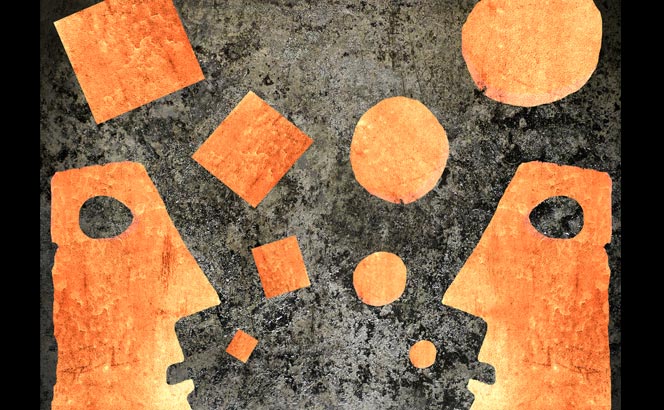
“Would you like a soda?” “No, thank you. I’ll take a pop though.”
Not all people who speak a language speak it the same. A person who likes soda may enjoy spending time on the California water, while a person who enjoys pop may prefer the Michigan lakeside “wutter.”
These variations in American dialect might seem trivial to the casual observer, but to the forensic scientist, the slightest distinction may be the determining factor in a criminal case.
Just ask Northern Arizona University Health Science professors William Culbertson and Dennis Tanner.
“People often mistakenly use the terms accent and dialect interchangeably,” Tanner explains. “Accent refers to how words are pronounced, while a dialect has its own syntax and common expressions that make it unique from other dialects of the same language.”
Why does this matter? Consider the New York case People v. Sanchez: A Spanish-speaking Puerto Rican man was indicted for murder in the second degree. The evidence presented at the trial included testimony from an eyewitness who had heard the victim and killer arguing in Spanish prior to the shooting. The witness who had spoken Spanish all of his life stated that the man with the gun was speaking with a Dominican accent, rather than a Puerto Rican accent, and that there is a distinctively Dominican accent and a different, equally distinctive, Puerto Rican accent. In light of these details, the court admitted the testimony regarding the accent of the shooter.

Tanner, who is an experienced expert witness and specialist in aural evaluation, often finds cases involving similar speaker identification issues making its way to his desk. When this occurs, he enlists the aid of Culbertson, and the two begin an auditory perceptual analysis, the Tanner Culbertson Aural Method of Voice Identification. This alternative to the traditional spectrographic voice prints uses expert listeners to identify a suspect voice from one or more audio samples.
“My senior students delight when we receive aural method voice identification requests,” Culbertson notes, smiling. “Along with Dr. Tanner and me, our trained students serve as expert listeners in these cases. It’s often the highlight of the semester.”
As expert listeners, the students participate in two aural analyses in a classroom setting. The first examination involves listening to a pair of audio samples and using short-term memory to make a judgment. The second method, duplexing, allows listeners to hear both audio samples in real time simultaneously, providing for instant judgment. Raw data is provided to attorneys and law enforcement to be used as appropriate.
Jonathan Barsness, the course’s graduate teaching assistant, is grateful for the opportunity provided, “Drs. Culbertson and Tanner gave me an inside look into real-world applications of linguistic forensics. In one case, I cut the audiotapes for duplexing and presented the material to the class as well. It was neat to be part of the process from start to finish. It’s also really fun as well. CSI in the classroom.”
Tanner believes the aural method of voice identification will continue to grow. “Too often voice print results are highly technical and too complicated for juries and lay persons to understand. With the aural method, it’s simple. It’s less expensive and extremely practical.”
With 30 years of experience in the field, the pair has found their niche and look to focus their efforts on the undergraduate experience.
“Our goal is to provide our students with the best opportunities and real-world experiences, and our method is one way we’re able to engage our students in such fieldwork. We hope to expand the program and one day have our own voice forensic laboratory right here at Northern Arizona University.”



